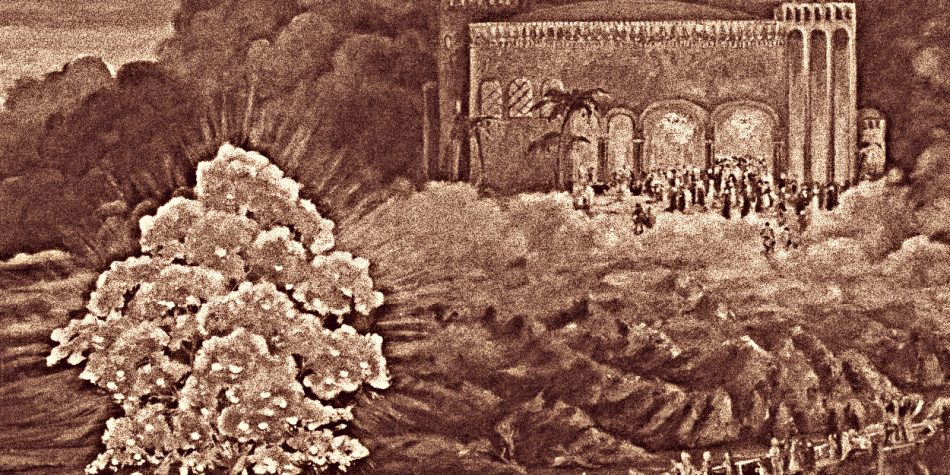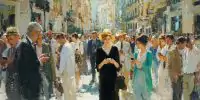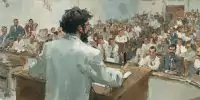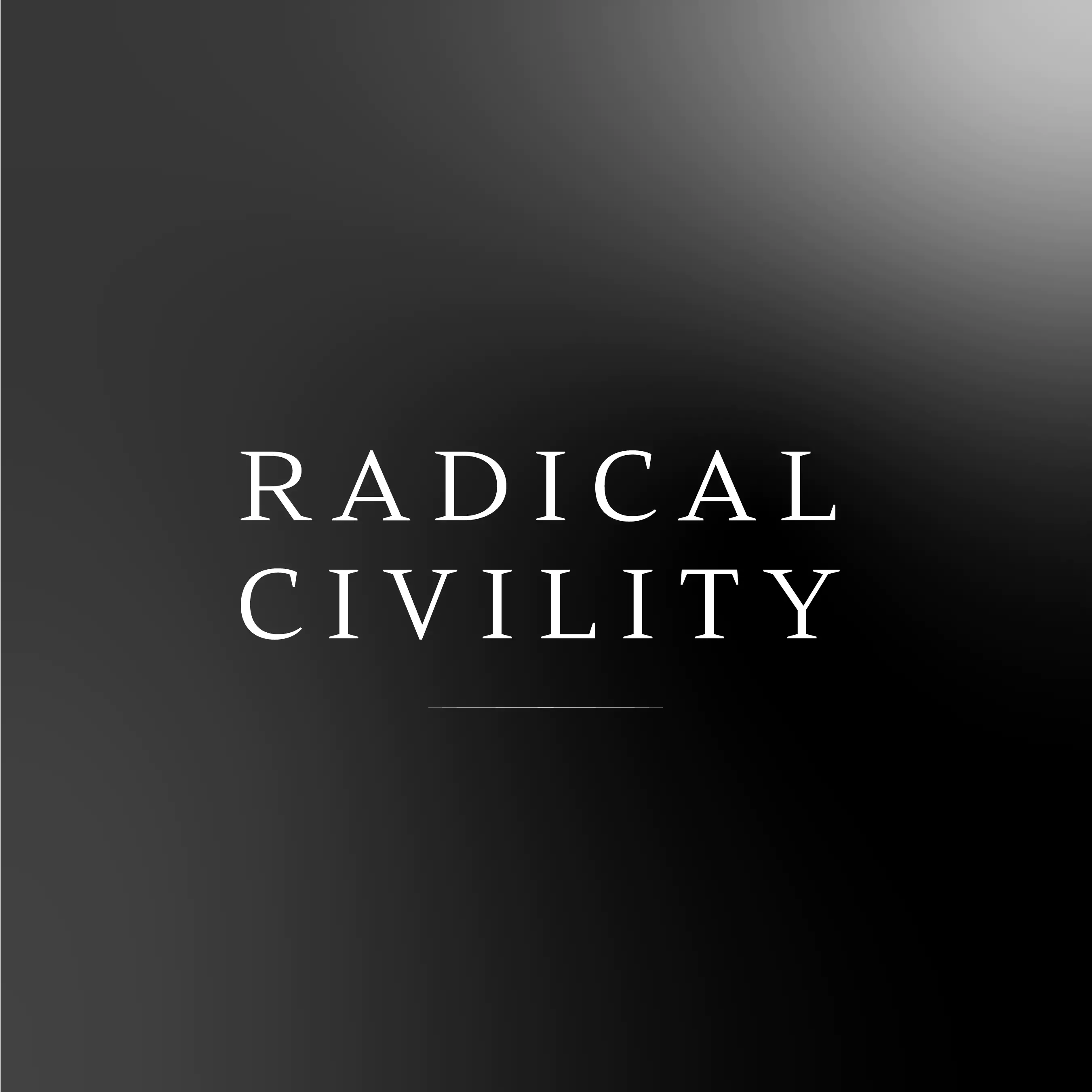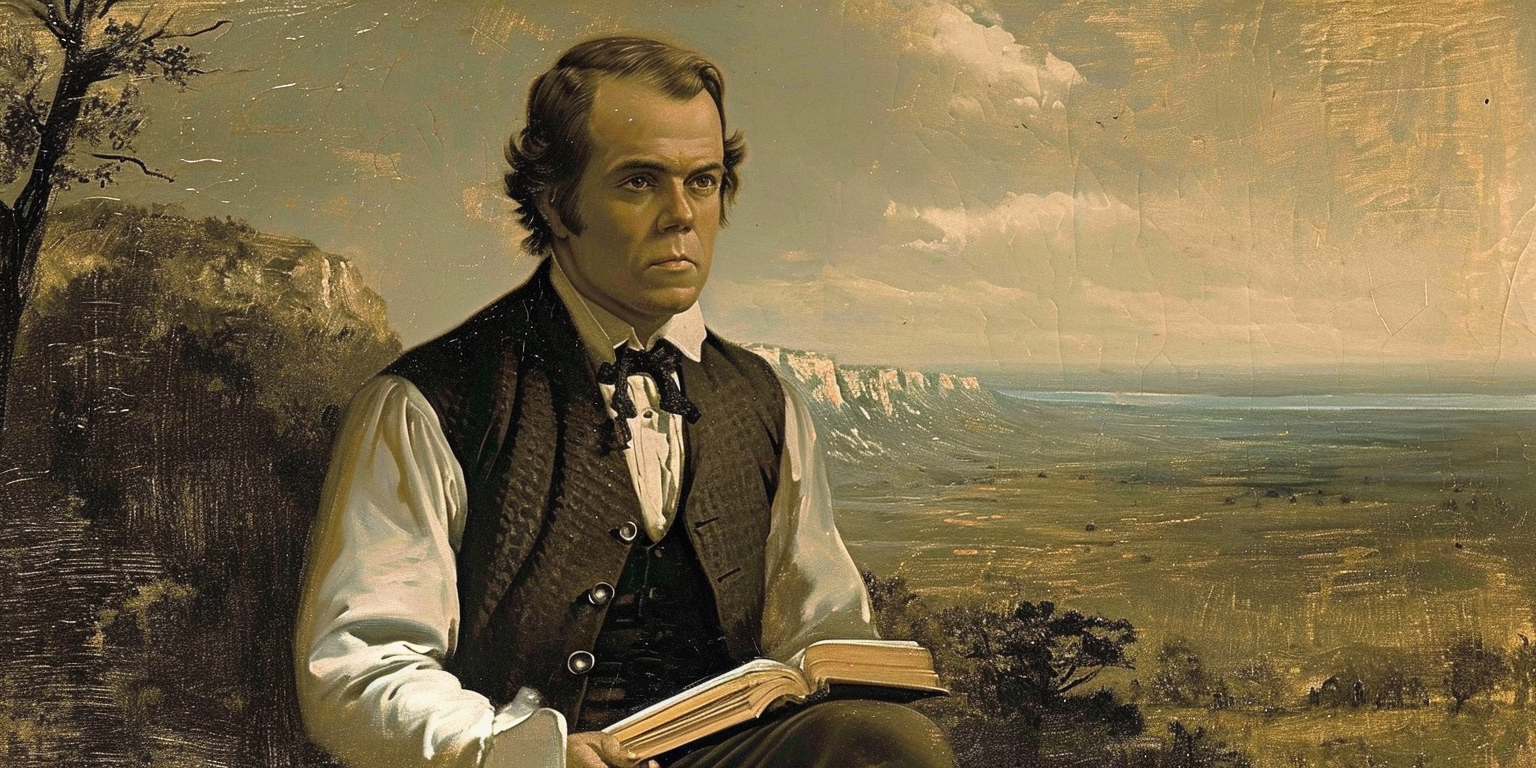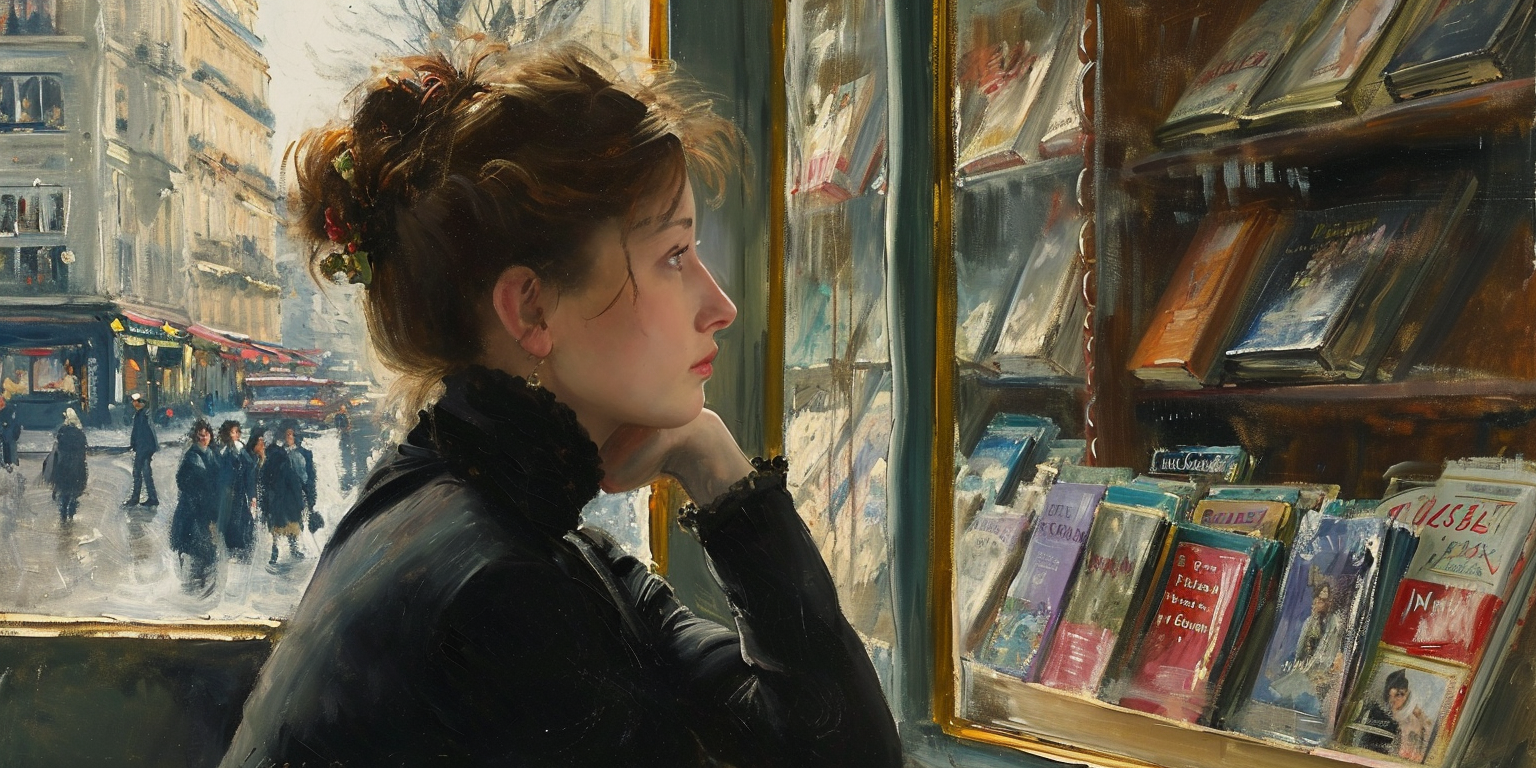“Latter-Day Saint Radical Orthodoxy: A Manifesto,” written by Nathaniel Givens, Jeffrey Thayne, J. Max Wilson and co-signed by nearly three dozen Latter-day Saints (including Valerie Hudson Cassler, Fiona and Teryl Givens, Ralph Handcock, Daniel Peterson, and Stephen Smoot), describes the position of “radical orthodoxy” by allusion to Greek literature:
Like Odysseus sailing between Scylla and Charybdis, the path of discipleship takes us through a narrow course between two spiritual monsters: unbridled progressivism and obstinate fundamentalism. Navigating these perilous waters requires “radical orthodoxy.” Radical orthodoxy is an approach to the Restored Gospel that seeks to harmonize fidelity with exploration and cultural improvement.
The allusion to Greek literature works well, but the authors might just as well have used an allegory from our own religious literature to illustrate the “middle way” of radical orthodoxy: Lehi’s tree of life vision (1 Nephi 8, 11). The vision is rich and I do not pretend to offer a complete reading here. For my purposes, I simply want to consider two opposite warnings inherent in the story.
A strait and narrow path leads to the Tree of Life— a symbol of Jesus Christ, the manifestation of Heavenly Father’s love, and our only true source of happiness and hope. An iron rod (the word of God) runs parallel to the path, which proves a useful tool as ominous mists of darkness rise to obscure the travelers’ vision. When the mists of darkness rise, some do not use the iron rod, or run their fingers along it too lightly and lose contact, and so get disoriented and are lost from the path. But the obstacles aren’t only environmental; there are social perils, too. In addition to the mists of darkness, a colosseum of well-dressed and sophisticated socialites jeers at the travelers. Perched at the top of their little Olympus, these smug, self-made gods hurl laughter like lightning bolts at those actually approaching apotheosis on the strait and narrow path. Many hear the tauntings, are ashamed, and leave the path. Some even leave the Tree after partaking of its fruit to join the laughing throngs. Doctrines do not cease to be doctrines because they become unfashionable.
The allegory contains a warning to the Church of Christ’s “cultured despisers” (to borrow a phrase from Friedrich Schleiermacher). It is a warning to progressive members of the Church who are “ashamed” of ‘outdated’ Church doctrines, and might be tempted to leave the strait and narrow path leading to the Tree of Life in order to carouse with the urbane and sophisticated socialites, academics, and philosophers of the “great and spacious building.” One of the temptations of progressivism is that it is typically (and currently) aligned with the larger cultural zeitgeist. Progressivism therefore often encourages one to shed any conspicuously ‘outmoded’ doctrines that are no longer fashionable. But, as GK Chesterton wrote, “Fallacies do not cease to be fallacies because they become fashions.” Inversely, doctrines do not cease to be doctrines because they become unfashionable.
Although the allegory certainly warns us against the dangers of the great and spacious building, it also offers a warning to those who resist its allure. In response to the mists of darkness and the tauntings of those in the great and spacious building, some respond by “clinging” to the iron rod until their knuckles go white:
And it came to pass that I beheld others pressing forward, and they came forth and caught hold of the end of the rod of iron; and they did press forward through the mist of darkness, clinging to the rod of iron, even until they did come forth and partake of the fruit of the tree. And after they had partaken of the fruit of the tree they did cast their eyes about as if they were ashamed… And after they had tasted of the fruit they were ashamed, because of those that were scoffing at them; and they fell away into forbidden paths and were lost.
Why does this happen? How do those who “cling” to the rod with so much forceful exertion abandon the Tree of Life and wander into apostasy? And this after actually tasting the incomparably delicious fruit of the Tree of Life?
“Clinging,” to me, suggests desperation, fundamentalism, and rigid dogmatism. In other words, while some might hold too loosely to the rod, it is also possible to hold too tightly and exhaust your strength. Those who “cling” are especially prone to disillusionment when they learn that Church leaders have made errors of judgment. Those who “cling” may be unable to accept new revelations; they may struggle with ambiguity, mystery, uncertainty, and paradox.
“Clinging,” in other words, is not necessarily a sign of faith. On the contrary, it may in many cases reflect a kind of spiritual cowardice born of fear and distrust. It may also embody an unwillingness to wait on the Lord, be left in the dark, ask or have unresolved questions. “Clinging” may likewise arguably translate into exclusive scriptural literalism, because it is uncomfortable with symbolism and poetry. And this same fearful, desperate reading of scripture may also spawn the dubious style of conspiratorial exegesis that, judging by the views on some eyebrow-raising Youtube videos of late, may be experiencing a surge in popularity among Latter-day Saints. It eggs on the militant weaponization of scripture; those who “cling” are liable to wield the iron rod like a gangster might use a lead pipe in a street fight.
This is what the manifesto calls “knee-jerk traditionalism”; we might also call it “white-knuckled traditionalism.” If you are a passenger in a car and you trust the skills and judgment of the driver, you aren’t likely to “cling” to the overhead handle. It’s only when you’re in a state of anxiety or panic that “clinging” becomes the instinctual reaction.
At the beginning of Lehi’s vision, before he sees the Tree or the rod of iron, and before he sees his family, he finds himself utterly alone in a dark and dreary wilderness. Then, he sees a “man, and he was dressed in a white robe. … And it came to pass that he spake unto me, and bade me follow him.” Who is this man? If Lehi knows, he does not inform us. The “white robe” might suggest he is some sort of angelic messenger, though there are no other telling details. No lightning-like countenance gives him away as more than the “man” he appears to be; he does not declare by whom he is sent, or for what purpose. He only bids Lehi to follow him. As Lehi does follow, he is led from a “dark and dreary wilderness” to a “dark and dreary waste”: “And it came to pass that as I followed him I beheld myself that I was in a dark and dreary waste.” This does not seem to be a discernible improvement in Lehi’s circumstances. Without so much as a word, the white-robed man disappears and leaves Lehi unattended to wander for the space of many hours in darkness. Finally, he prays to the Lord and he beholds a field, and in the field, a Tree. Perhaps, then, Lehi’s vision is hinting at ways in which faithful discipleship may also, at times, be meandering, and profoundly confusing.
When retelling Lehi’s vision, we often omit these opaque verses, which seem to raise more questions than they provide answers. Who again was the white-robed man? Assuming, as I suppose most readers do, that the white-robed man is an angelic messenger, what does it mean that Lehi is led by an angel of God from one dreary space to another—from a “wilderness” to a “waste”? Why is Lehi suddenly abandoned by his angelic guide to wander in darkness for many hours?
To me, Lehi’s experience wandering from wilderness to waste to darkness suggests that the business of discipleship, revelation, and prophecy can be challenging and ambiguous. It doesn’t always lead to immediate enlightenment. To follow God often means to grope after him. The almost-oxymoronic phrase “white-robed man” seems, to me, to be a fitting illustration of what it feels like to receive revelation. Often, we are bid to follow what we think might be promptings or revelations but can’t be sure of their source. Do my revelations have the authentic, white-robed origin and authority of heaven? Or am I merely clothing my own (hu)“man” thoughts and feelings in faux white-robes to impersonate revelation? Like Lehi, we receive flashes of insight and revelation only to be left in the dark in the very next moment. Sometimes we dutifully follow flashes of insight and revelation only to be led from one “wilderness” to another “waste.” The messiness, mystery, opacity, unpredictability, ambiguity, and stop-and-go quality of revelation and discipleship is unattractive to white-knuckle or knee-jerk traditionalists for whom following the Lord is always very simple in every single instance without exception: the path is strait and linear; the iron rod is cold, hard, and predictable.
One might be surprised to learn, upon close examination of the text, that Lehi does not use the iron rod at all to find his way to the Tree of Life. Instead, he followed the angelic messenger, wandered, groped, fumbled, and prayed and then— miraculously, and as if by accident— opened his eyes to realize he had stumbled upon the marvelous tree. Lehi only thought that he had wandered ineffectually and circuitously from wilderness to waste; actually, he was making progress all the while.
Perhaps, then, Lehi’s vision is hinting at ways in which faithful discipleship may also, at times, be meandering, and profoundly confusing— even while we appropriately seek after greater clarity and stability. Indeed, as far as the clearly-defined and non-negotiable doctrinal issues taught by prophets and apostles and outlined in the scriptures, we are to hold to the rod without clinging to it. As the authors state, “Radical orthodoxy is orthodox because it promotes fierce fidelity to revealed truth, the institutional Church, and the Lord’s authorized representatives, and therefore rejects the excesses of progressivism. This includes meticulously heeding and unabashedly embracing the counsel and teachings of prophets and apostles regarding chastity and morality, the divinity of Christ, and the foundational claims of the Restoration— even when doing so runs contrary to popular, worldly views.” Yet, with respect to the many doctrinal matters about which there remains some uncertainty, Lehi’s account of groping in wilderness and waste and snatching at fleeting instances of revelation is perhaps another model of asking and grappling with questions: “Radical orthodoxy cultivates humility and a recognition that far less is certain about many doctrinal matters than we often presume. Those who embrace radical orthodoxy are not afraid to ask questions, and they eschew dogmatism with regards to lesser controversies—even while they boldly defend faith, diligence, and conviction on matters of covenant living, revelation, doctrine, and authority.”
Perhaps the position of Radical Orthodoxy could be stated thusly: some progressives thrill at the adventurous uncertainties and mysteries of the as-yet-undefined but bristle at the boring fixity of the iron rod which circumscribes its speculative adventures and bars them from full participation in the zeitgeist. At the same time, some traditionalists are enthralled at the certainties of revealed doctrines, the security of the iron rod, and the unique peculiarities of Latter-day Saint culture, but shrink from the misty mysteries at the margins of defined doctrine and the possibility of profound (and sometimes disorienting) progress and development. Radical Orthodoxy tries to incorporate the best of both of these positions while avoiding the pitfalls of each. It holds to the rod (without clinging) with respect to certain foundational, claims while remaining open to the adventures and surprises of a Restoration that is still underway and ongoing.
The Lord calls His church the “true and living church.” Members of the Church of Jesus Christ are wise to prize the precious truths the Restoration has bequeathed to them while also appreciating that this church is living— and like any living organism will change and develop. We need a church that is both true and living, and we ignore either quality at our peril.
“Latter-Day Saint Radical Orthodoxy: A Manifesto” articulates the kind of Latter-day Saint I’d like to be: “faithful and flexible instead of either rigidly dogmatic or heretical and doubting.” Lehi’s vision provides a useful archetype for this kind of flexible and vital faith.

